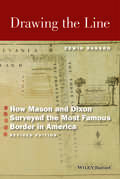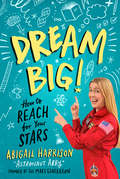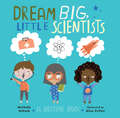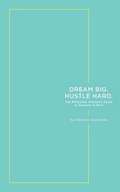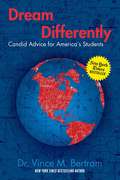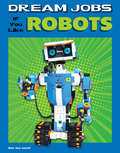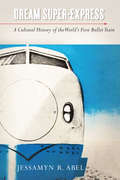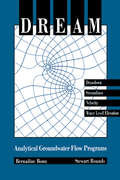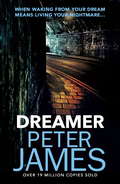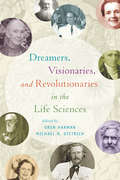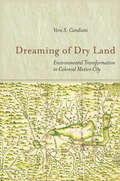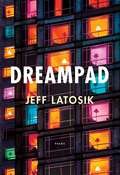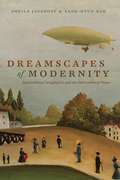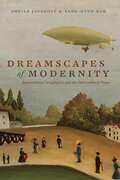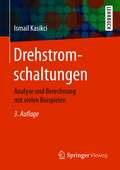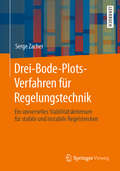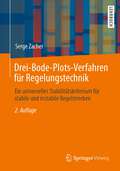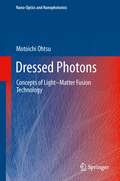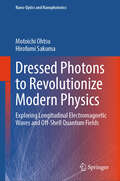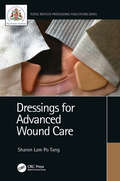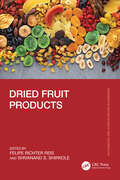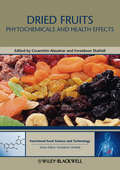- Table View
- List View
Drawing the Line: How Mason and Dixon Surveyed the Most Famous Border in America
by Edwin DansonThe second edition of Drawing the Line: How Mason and Dixon Surveyed the Most Famous Border in America updates Edwin Danson's definitive history of the creation of the Mason - Dixon Line to reflect new research and archival documents that have come to light in recent years. Features numerous updates and revisions reflecting new information that has come to light on surveyors Charles Mason and Jeremiah Dixon Reveals the true origin of the survey's starting point and the actual location of the surveyors' observatory in Embreeville Offers expanded information on Mason and Dixon's transit of Venus adventures, which would be an important influence on their future work, and on Mason's final years pursuing a share of the fabulous Longitude prize, and his death in Philadelphia Includes a new, more comprehensive appendix describing the surveying methods utilized to establish the Mason-Dixon Line
Dream Big!: How to Reach for Your Stars
by Abigail HarrisonFrom Astronaut Abby, the dynamic founder of The Mars Generation, comes a book about dreaming big, reaching for the stars, and making a plan for success!From the age of four, Abigail Harrison knew she wanted to go to space. At age eleven, she sat down and wrote out a plan--not just for how to become an astronaut, but how to be the first astronaut to set foot on Mars. With a degree in biology, internships at NASA, and a national organization founded to help kids reach for the stars themselves, Astronaut Abby is well on her way to achieving her dreams--and she wants to help others do the same!In this book, readers will find helpful advice and practical tips that can help set them on the path toward finding, reaching for, and achieving their goals. With examples from Abby's own life, interactive activities to get readers going, and plenty of fun illustrations along the way, this is the perfect guide for anyone--of any age--with big dreams and plenty of determination. It's time to reach for the stars!Praise for Dream Big!:"With friendly encouragement . . . the content and approach are general enough to appeal both to STEM-oriented fans of the author as well as those whose interests lie in other areas . . . Fun and helpful." --Kirkus Reviews"Any young person who wants to achieve their dreams will find this comprehensive book helpful." --Booklist
Dream Big, Little Scientists: A Bedtime Book
by Michelle SchaubTwelve kids. A dozen bedtimes. Endless sweet ways to say goodnight with science!Spark curiosity and exploration with this innovative bedtime story for budding scientists that introduces eleven branches of science. From astronomy to physics to chemistry to geology, this STEM picture book will help kids get excited to explore. Includes further information about each branch of science.
Dream Big. Hustle Hard: The Millennial Woman's Guide To Success In Tech
by Abadesi OsunsadeSince launching her career advancement community Hustle Crew in autumn 2016, Abadesi Osunsade has helped thousands of 20-somethings from diverse backgrounds land jobs in tech or progress their careers. In this book she outlines how she navigated the industry with zero coding skills and won roles at major tech players including Amazon and Groupon. Each chapter contains anecdotes, activities and frameworks which will give ambitious individuals the motivation and tools they need to earn more and learn more in a competitive career landscape.
Dream Differently: Candid Advice for America's Students
by Dr Vince M. BertramTo get the most out of your college education, you need to choose your classes wisely -- and increasingly, that means choosing STEM. Today's job seekers should have at least a basic understanding of trigonometry and other science, technology, engineering, and math (STEM) fields. The U.S. Bureau of Labor Statistics projects more than 1.3 million job openings in math and computer-related fields by 2022. The purpose of this book is not to push you into a STEM career; it is simply to provide you with information and perspective, as well as a few questions that, if answered honestly, will help you plot out an educational and career pathway that will help you achieve your dreams.
Dream Jobs If You Like Robots (Dream Jobs for Future You)
by Amie Jane LeavittWouldn't it be cool to have a job working with or around the things you love? Do you have an interest in artificial intelligence? Maybe working with bots would compute for you! Readers will discover the possibilites of careers working with robots.
Dream Super-Express: A Cultural History of the World's First Bullet Train (Studies of the Weatherhead East Asian Institute, Columbia University)
by Jessamyn AbelA symbol of the "new Japan" displayed at World's Fairs, depicted in travel posters, and celebrated as the product of a national spirit of innovation, the Tōkaidō Shinkansen—the first bullet train, dubbed the "dream super-express"—represents the bold aspirations of a nation rebranding itself after military defeat, but also the deep problems caused by the unbridled postwar drive for economic growth. At the dawn of the space age, how could a train become such an important symbol? In Dream Super-Express, Jessamyn Abel contends that understanding the various, often contradictory, images of the bullet train reveals how infrastructure operates beyond its intended use as a means of transportation to perform cultural and sociological functions. The multi-layered dreams surrounding this high-speed railway tell a history not only of nation-building but of resistance and disruption. Though it constituted neither a major technological leap nor a new infrastructural connection, the train enchanted, enthralled, and enraged government officials, media pundits, community activists, novelists, and filmmakers. This history of imaginations around the monumental rail system resists the commonplace story of progress to consider the tug-of-war over the significance of the new line. Is it a vision of the future or a reminder of the past, an object of international admiration or a formidable threat? Does it enable new relationships and identities or reify existing social hierarchies? Tracing the meanings assigned to high-speed rail shows how it prompted a reimagination of identity on the levels of individual, metropolis, and nation in a changing Japan.
Dream-Analytical Ground Water Flow Programs
by Stewart Rounds Bernadine A. BonnValuable for consultants and regulators...Dream is a useful tool for basic field work, including the first-cut evaluation of remediation design. Ground water professionals will find Dream to be ideal for estimating actual flow conditions when information on aquifer properties is limited. Flow nets, streamline plots, and capture zone maps are easily produced by contouring Dream's output files. Maps of head, drawdown, and ground water velocity are equally simple to create. These provide an uncomplicated method for estimating both direction and magnitude of flow, and the areal extent of the well's influence. This must-have volume is valuable for hydrologists, regulators, ground water professionals, students, professors, and consultants. This work is a valuable teaching tool for principles of subsurface hydrology. It is easy-to-use and illustrates hydrologic concepts, pumping schemes, remediation schemes, etc. The importance of fundamental aquifer properties can be easily explored, at both the graduate and undergraduate levels.
Dreamer
by Peter JamesWhen waking from your dream means living your nightmare...The last time the dream came, Sam was seven years old; and that was the night her parents were to die.Twenty-five years later, Sam's nightmares are starting to come true once more. Now a successful TV commercials producer, juggling her roles of career woman, wife and mother, she attempts to shut them out.But soon Sam is faced with the reality of dreams in which her life and that of her family are threatened. In desperation, she consults the experts: a psychiatrist; a clairvoyant ... but to no avail. Sam is being inexorably drawn into a vortex of terror from which there is no escape...'Britain's closest equivalent to Stephen King.' Sunday Times 'Peter James is getting better with every book.' TimesRead more from the multi-million copy bestselling author of the Roy Grace novels:Possession DreamerSweet Heart Twilight Prophecy Host Alchemist Denial The Truth Faith * Each Peter James novel can be read as a standalone*
Dreamer: An Autobiography
by Peter JamesWhen waking from your dream means living your nightmare...The last time the dream came, Sam was seven years old; and that was the night her parents were to die.Twenty-five years later, Sam's nightmares are starting to come true once more. Now a successful TV commercials producer, juggling her roles of career woman, wife and mother, she attempts to shut them out.But soon Sam is faced with the reality of dreams in which her life and that of her family are threatened. In desperation, she consults the experts: a psychiatrist; a clairvoyant ... but to no avail. Sam is being inexorably drawn into a vortex of terror from which there is no escape...'Britain's closest equivalent to Stephen King.' Sunday Times 'Peter James is getting better with every book.' TimesRead more from the multi-million copy bestselling author of the Roy Grace novels:Possession DreamerSweet Heart Twilight Prophecy Host Alchemist Denial The Truth Faith * Each Peter James novel can be read as a standalone*
Dreamers, Visionaries, and Revolutionaries in the Life Sciences
by Oren Harman Michael R. DietrichWhat are the conditions that foster true novelty and allow visionaries to set their eyes on unknown horizons? What have been the challenges that have spawned new innovations, and how have they shaped modern biology? In Dreamers, Visionaries, and Revolutionaries in the Life Sciences, editors Oren Harman and Michael R. Dietrich explore these questions through the lives of eighteen exemplary biologists who had grand and often radical ideas that went far beyond the run-of-the-mill science of their peers. From the Frenchman Jean-Baptiste Lamarck, who coined the word “biology” in the early nineteenth century, to the American James Lovelock, for whom the Earth is a living, breathing organism, these dreamers innovated in ways that forced their contemporaries to reexamine comfortable truths. With this collection readers will follow Jane Goodall into the hidden world of apes in African jungles and Francis Crick as he attacks the problem of consciousness. Join Mary Lasker on her campaign to conquer cancer and follow geneticist George Church as he dreams of bringing back woolly mammoths and Neanderthals. In these lives and the many others featured in these pages, we discover visions that were sometimes fantastical, quixotic, and even threatening and destabilizing, but always a challenge to the status quo.
Dreaming of Dry Land: Environmental Transformation in Colonial Mexico City
by Vera S. CandianiNot long after the conquest, the City of Mexico's rise to become the crown jewel in the Spanish empire was compromised by the lakes that surrounded it. Their increasing propensity to overflow destroyed wealth and alarmed urban elites, who responded with what would become the most transformative and protracted drainage project in the early modern America—the Desagüe de Huehuetoca. Hundreds of technicians, thousands of indigenous workers, and millions of pesos were marshaled to realize a complex system of canals, tunnels, dams, floodgates, and reservoirs. Vera S. Candiani's Dreaming of Dry Land weaves a narrative that describes what colonization was and looked like on the ground, and how it affected land, water, biota, humans, and the relationship among them, to explain the origins of our built and unbuilt landscapes. Connecting multiple historiographical traditions—history of science and technology, environmental history, social history, and Atlantic history—Candiani proposes that colonization was a class, not an ethnic or nation-based phenomenon, occurring simultaneously on both sides of an Atlantic, where state-building and empire-building were intertwined.
Dreampad
by Jeff LatosikA hopeful, timely new collection of poems that take up our ever-evolving relationship with technology.Starting from an urge to reconcile the human need for stability with what's happening in a constantly fluid "now," Dreampad, Trillium Book Award for Poetry winner poet Jeff Latosik's startling new collection, ponders whether an ideal for living is viable when we're not sure we can say yes or no to anything in a world that's growing increasingly ephemeral and entangled with the virtual.These poems, however, are a salvo--or "protest" in the most useful sense of that word--a reminder we might already own a verbal architecture to express the difficulty of being alive in a world that can, could, and might still even be humane, loving, habitable.
Dreamscapes of Modernity: Sociotechnical Imaginaries and the Fabrication of Power
by Sheila Jasanoff Sang-Hyun KimDreamscapes of Modernity offers the first book-length treatment of sociotechnical imaginaries, a concept originated by Sheila Jasanoff and developed in close collaboration with Sang-Hyun Kim to describe how visions of scientific and technological progress carry with them implicit ideas about public purposes, collective futures, and the common good. The book presents a mix of case studies--including nuclear power in Austria, Chinese rice biotechnology, Korean stem cell research, the Indonesian Internet, US bioethics, global health, and more--to illustrate how the concept of sociotechnical imaginaries can lead to more sophisticated understandings of the national and transnational politics of science and technology. A theoretical introduction sets the stage for the contributors' wide-ranging analyses, and a conclusion gathers and synthesizes their collective findings. The book marks a major theoretical advance for a concept that has been rapidly taken up across the social sciences and promises to become central to scholarship in science and technology studies.
Dreamscapes of Modernity: Sociotechnical Imaginaries and the Fabrication of Power
by Sheila Jasanoff Sang-hyun KimDreamscapes of Modernity offers the first book-length treatment of sociotechnical imaginaries, a concept originated by Sheila Jasanoff and developed in close collaboration with Sang-Hyun Kim to describe how visions of scientific and technological progress carry with them implicit ideas about public purposes, collective futures, and the common good. The book presents a mix of case studies—including nuclear power in Austria, Chinese rice biotechnology, Korean stem cell research, the Indonesian Internet, US bioethics, global health, and more—to illustrate how the concept of sociotechnical imaginaries can lead to more sophisticated understandings of the national and transnational politics of science and technology. A theoretical introduction sets the stage for the contributors’ wide-ranging analyses, and a conclusion gathers and synthesizes their collective findings. The book marks a major theoretical advance for a concept that has been rapidly taken up across the social sciences and promises to become central to scholarship in science and technology studies.
Drehstromschaltungen: Analyse und Berechnung mit vielen Beispielen
by Ismail KasikciDieses Buch befasst sich mit der Berechnung von Drehstromschaltungen und ihren Anwendungen in der Praxis. Dreiphasige Drehstromsysteme werden in der Nieder- und Hochspannungstechnik verwendet und sind für die elektrische Energieerzeugung sowie deren Umwandlung unentbehrlich. Zunächst werden die symmetrischen Systeme für Erzeuger und Verbraucher behandelt. Da Einphasenverbraucher und Störungen des normalen Betriebs häufig zu unsymmetrischen Belastungen führen, werden anschließend diese näher betrachtet. Falls Schaltungsglieder ein lineares Verhalten zeigen, können für solche Aufgaben Lösungen mit den bekannten Verfahren der Wechselstromtechnik gefunden werden. Bei elektrischen Netzen und Maschinen liegen jedoch Schaltungen vor, deren Kennwerte z.B. von Drehzahl, Drehrichtung, Impedanz, Strom oder Spannung abhängen. In diesen Fällen wird eine besondere Betrachtungsweise angewendet, das Verfahren der symmetrischen Komponenten. Ihre Größen und Wirkungen werden hierbei in Analyse und Synthese betrachtet.
Drei Wochen im letzten Frühjahr
by Victoria HowardFriday Harbor, eine malerische Kleinstadt im pazifischen Nordwesten, ist ein Zufluchtsort für Fischer und Segler. Für Skye Dunbar ist es ein Ort, an dem sie den Schmerz eines gebrochenen Herzens überwinden und ihr Leben wieder in den Griff bekommen kann. Als sie eine Hütte an der Küste mietet, ist das Letzte, womit sie rechnet, dass sie des Computer-Hackings beschuldigt wird. Jedediah Walker untersucht die toten Meeresbewohner, die an den Stränden der Insel angespült wurden. Als er entdeckt, dass die Fische eine hohe Konzentration giftiger Chemikalien enthalten, vermutet er, dass jemand sie absichtlich in den Puget Sound entsorgt hat. Schnell zieht er voreilige Schlüsse und vermutet, dass die rothaarige Frau, die seine Hütte gemietet hat, etwas damit zu tun hat. Skye versucht, ihn zu ignorieren, aber die Not bringt sie zusammen, als sie versuchen, die Verantwortlichen für diese Umweltkatastrophe zu finden.
Drei-Bode-Plots-Verfahren für Regelungstechnik: Ein universelles Stabilitätskriterium für stabile und instabile Regelstrecken
by Serge ZacherDas Buch liefert eine einfache und für den Einsatz im Studium und in der Praxis angepasste Darstellung eines neuartigen Stabilitätskriteriums mit getrennter Behandlung von Amplituden- und Phasengängen in einem Bode-Diagramm. Die angebotenen Symmetrieverfahren sind mit Beispielen und Übungsaufgaben mit Lösungen begleitet und zum besseren Verständnis mit MATLAB® simuliert. Das Buch ist sowohl für Präsenzunterricht als auch für Selbststudium geeignet.
Drei-Bode-Plots-Verfahren für Regelungstechnik: Ein universelles Stabilitätskriterium für stabile und instabile Regelstrecken
by Serge ZacherDas von A. Leonhard im Jahre 1940 vorgeschlagene Stabilitätskriterium, bekannt als Zweiortskurvenverfahren, ist im Buch durch Einsatz eines gespiegelten negativ inversen Reglers zu einem neuen Verfahren (DBV) überarbeitet und in einem Bode-Diagramm mit drei getrennten Amplituden- und Phasengängen angewendet. Das DBV hat mehrere Vorteile gegenüber bekannten Nyquist- oder Michailow-Stabilitätskriterien und lässt die Stabilität von Regelkreisen direkt anhand Bode-Plots der Regelstrecke prüfen. Die Übungsaufgaben sind mit Lösungen begleitet, die zum besseren Verständnis mit MATLAB® simuliert sind.
Dressed Photons
by Motoichi OhtsuAuthored by the developer of dressed photon science and technology as well as nanophotonics, this book outlines concepts of the subject using a novel theoretical framework that differs from conventional wave optics. It provides a quantum theoretical description of optical near fields and related problems that puts matter excitation such as electronic and vibrational ones on an equal footing with photons. By this description, optical near fields are interpreted as quasi-particles and named dressed photons which carry the material excitation energy in a nanometric space. The author then explores novel nanophotonic devices, fabrications, and energy conversion based on the theoretical picture of dressed photons. Further, this book looks at how the assembly of nanophotonic devices produces information and communication systems. Dressed photon science and technology is on its way to revolutionizing various applications in devices, fabrications, and systems. Promoting further exploration in the field, this book presents physically intuitive concepts, theories, and technical details for students, engineers, and scientists engaged in research and development in dressed photon science and technology as well as nanophotonics.
Dressed Photons to Revolutionize Modern Physics: Exploring Longitudinal Electromagnetic Waves and Off-Shell Quantum Fields (Nano-Optics and Nanophotonics)
by Motoichi Ohtsu Hirofumi SakumaThis book presents an in-depth review of the recent interdisciplinary studies that have shed light on the mechanisms of the creation, energy transfer, and measurement of the dressed photon. A dressed photon is a type of photon that results from the interaction between light and matter in a confined space, typically on the scale of nanometers. It has been applied to nano-fabrication technologies, energy conversion technologies, and silicon light-emitting devices. Despite its extensive applications in various fields, the dressed photon's off-shell nature has posed challenges in describing it through conventional optical scientific theories. The book explains how, through a mathematical viewpoint, the underlying spatiotemporal vortex dynamics connect the dressed photon, the dark energy field, and the structure of the universe. The canonical equations of motion, which describe the time evolution of dynamical systems with Hamiltonian structure, play a key role in understanding these physical phenomena. In particular, the covariant form of equations of motion, where vortex tensors explicitly appear, corresponds to the transformed canonical equations of motion in the Eulerian representation. This newly augmented view of the equations of motion presents a deeper understanding of the interconnectedness of different physical phenomena, which can enlighten graduate students, junior scientists, and industry engineers engaged or interested in this field.
Dressings for Advanced Wound Care (Textile Institute Professional Publications)
by Sharon Lam TangDressings for Advanced Wound Care focuses on helping the reader better understand advanced wound care and relevant technologies. It explains how different types of wounds may require different environments to heal and how dressings can help in creating the right environment. It gives an overview of the various dressing technologies that are available to help manage wounds that are difficult to heal. Finally, this book highlights the current trends that may be directing the future of the advanced wound dressing sector. FEATURES: Relates technologies with commercially available end-products, giving the reader a more specific overview of the advanced wound dressing sector Provides a realistic overview of the process of developing an advanced wound care dressing Summarises recent clinical evidence on advanced wound dressings Explains how dressings differ and what works best for which wound type Examines clinical evidence on technologies and on-market products Describes the requirements for launching a new advanced wound dressing This book is aimed at medical clinicians and professionals in the fields of biomedical engineering, textile science, and materials engineering.
Drew the Screw (I Like to Read)
by Mattia CeratoEvery tool has a job—but what can Drew the Screw do? Find out in this Level E reader, perfect for Kindergarten and first-grade readers. The pencil draws lines. The saw can cut. But unlike everyone else in the toolshed, Drew the screw has no job. He watches as one by one the tools show off their skills . . . and then he finds his own hidden talent, holding up a Home, Sweet Home sign in a newly-built treehouse. Bright digital drawings of cartoonish tools happily going about their jobs are paired with a very simple text, appropriate for children just beginning to read on their own. Explore all the different things tools can do—and the joy of finding your own special talents!—with Drew. The award-winning I Like to Read® series focuses on guided reading levels A through G, based upon Fountas and Pinnell standards. Acclaimed author-illustrators--including winners of Caldecott, Theodor Seuss Geisel, and Coretta Scott King honors—create original, high quality illustrations that support comprehension of simple text and are fun for kids to read with parents, teachers, or on their own! Level E stories feature a distinct beginning, middle, and end, with kid-friendly illustrations offering clues for more challenging sentences. Varied punctuation and simple contractions may be included. Level E books are suitable for early first graders. When Level E is mastered, follow up with Level F.
Dried Fruit Products (ISSN)
by Felipe Richter Reis Shivanand S. ShirkoleDehydration of fruits is a massive operation amounting to tens of billions of dollars’ worth in the global market. The enormous variety of fruits grown around the world and the wide range of products made therefrom make this an attractive method for the development of novel and shelf-stable consumer products.Dried Fruit Products offers a current approach linking the theory and practice of fruit drying, summarizing various techniques, their advantages and limitations, industrial applications, and simple design methods. Such dried fruit products as fruit pieces, fruit leathers, and fruit powders are dealt with in a way to inform their physical, chemical, sensory, and nutritional features, along with the characteristics of the process used to obtain them, such as drying method and drying equipment.Key Features: Contains up-to-date information on fruit drying Presents a multi-perspective viewpoint of fruit drying Addresses both food science and chemical engineering aspects of fruit drying Readers can gain knowledge on the various types of drying techniques and insightful thoughts on selecting the appropriate drying techniques for different fruit products.
Dried Fruits: Phytochemicals and Health Effects (Hui: Food Science and Technology #8)
by Fereidoon ShahidiDried fruits serve as important healthful snack items around the world. They provide a concentrated form of fresh fruits, prepared by different drying techniques. With their unique combination of taste/aroma, essential nutrients, fibre, and phytochemicals or bioactive compounds, dried fruits are convenient for healthy eating and can bridge the gap between recommended intake of fruits and actual consumption. Dried fruits are nutritionally equivalent to fresh fruits, in smaller serving sizes, in the current dietary recommendations of various countries. Scientific evidence suggests that individuals who regularly consume generous amounts of dried fruits have lower rates of cardiovascular disease, obesity, various types of cancer, type-2 diabetes, and other chronic diseases. Dried fruits also have the advantage of being easy to store and distribute, available around the year, readily incorporated into other foods and recipes, and present a healthy alternative to salty or sugary snacks. Dried Fruits: Phytochemicals and Health Effects is divided into three sections preceded by introductory chapters that provide an overview of dried fruits (their composition, phytochemicals and health applications) as well as the cancer chemopreventive effects of selected dried fruits (amla fruits or Indian gooseberries, avocados, berries, mangoes, mangosteens, persimmons, prunes, raisins, kiwi fruits, and other dried fruits). The first section covers the most popular dried berries (blackberries, blackcurrants, blueberries, cranberries, goji berries, mulberries, raspberries, and strawberries); the second section discusses non-tropical dried fruits (apples, apricots, cherries, citrus fruits, figs, nectarines, peaches, pears, prunes, and raisins); and the final section addresses tropical dried fruits (açai fruits, bananas, dates, guavas, papayas, mangoes, passion fruits, and pineapples). Contributors to this volume are internationally renowned researchers who have provided a comprehensive account of the global perspectives of the issues relating to phytochemicals and health effects of dried fruits. The book will serve as a resource for those interested in the potential application of new developments in dried fruits’ nutraceuticals and functional foods. Biochemists, chemists, food scientists/technologists, nutritionists, and health professionals, from academia, government laboratories, and industry will benefit from this publication. Although this book is intended primarily as a reference book, it also summarises the current state of knowledge in key research areas and contains ideas for future work. In addition, it provides easy to read text suitable for teaching senior undergraduate and post-graduate students.
